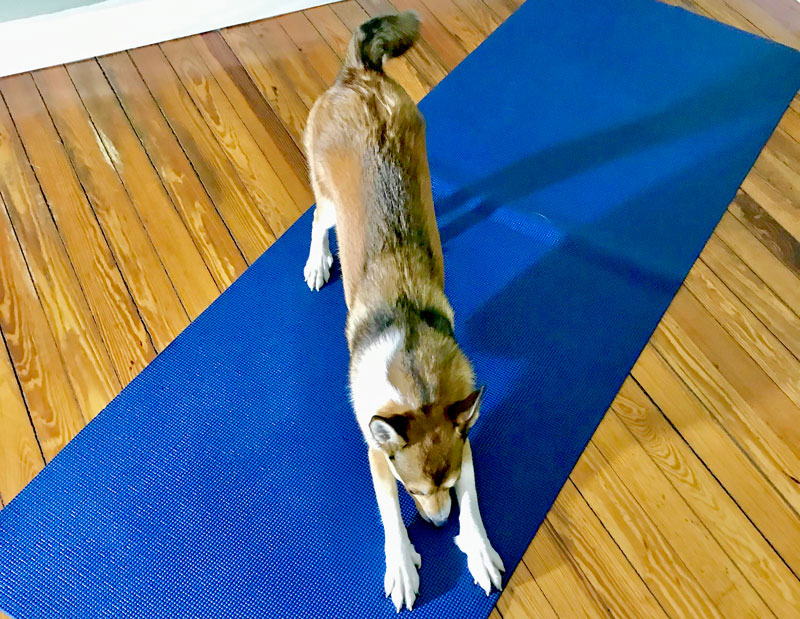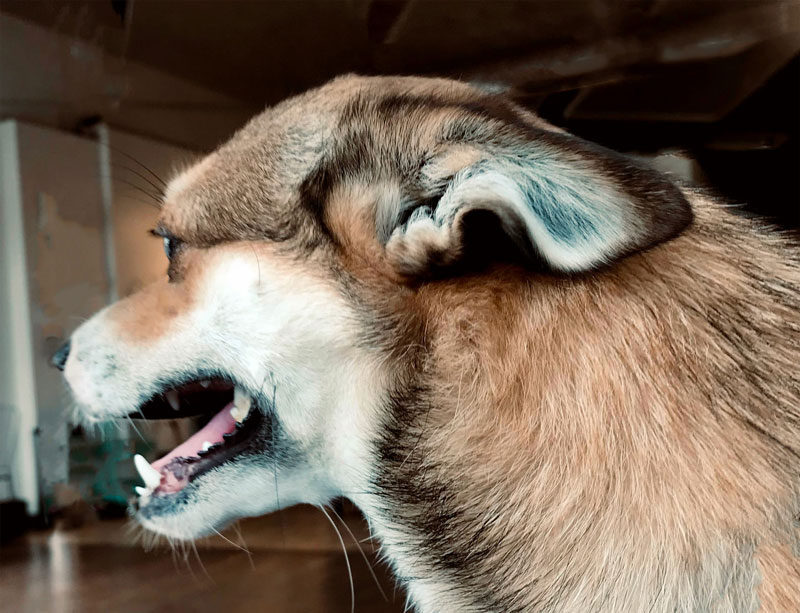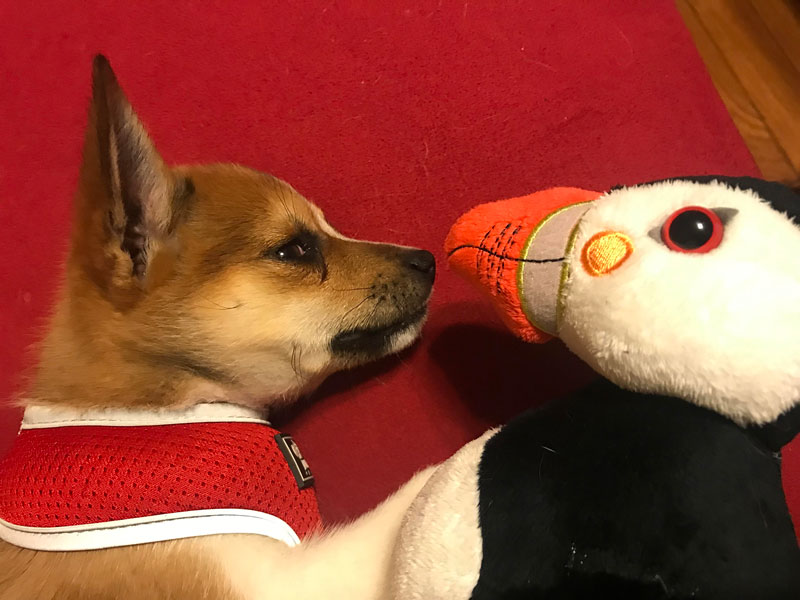 The Breed
The Breed 

Six toes on each foot
Each toe is fully developed and functional, with tendons, muscles, bones, and a joint, pad, and nail. They are not double dewclaws. Extra toes are used for climbing, digging into puffin dens, and gripping rocks.

Elongated pads on back feet
The elongated pad’s “swoosh” shape is visible when standing. The pads provide traction while climbing and breaking.

Flexible shoulders and spine
Shoulders stretch 90 degrees from the body to scramble up rocks and, along with extra toes, break headlong vertical falls. An extra notch in the neck allows the head to tilt back and touch the spine—perfect for exiting a narrow puffin den while shimmying backwards. While the head-to-spine flexibility does not hurt the dog, manual demonstration is discouraged.

Ears independently fold shut
Each ear independently folds shut, sealing off the ear canal from debris while digging and protecting it from cold, powerful winds.

Fewer teeth
Two fewer teeth on the top and bottom allow the dogs to cradle an egg without breaking it. The dog’s soft mouth kept puffins alive when brought back to their humans.

Active tear ducts
Tear ducts lubricate the eyes and wash out debris while hunting underground.